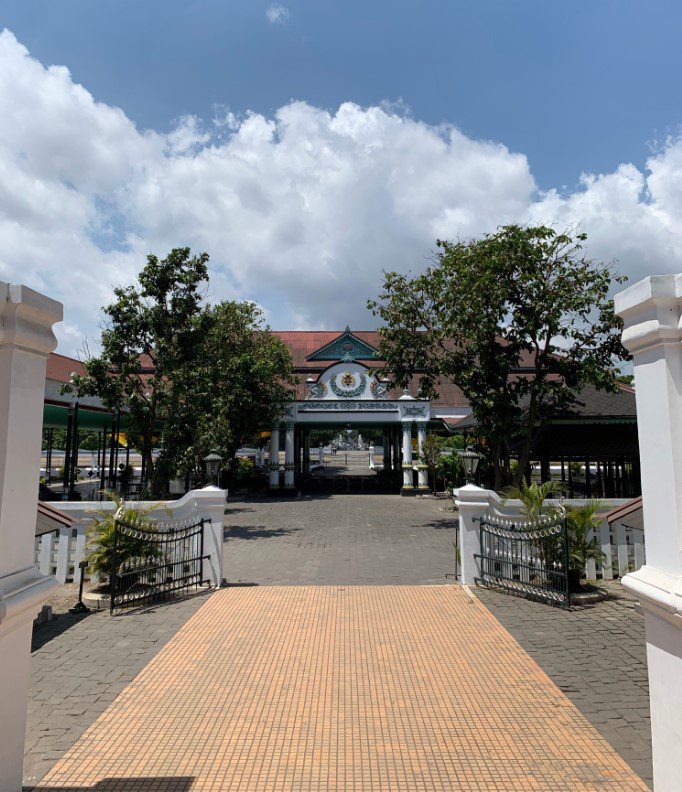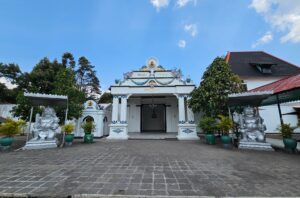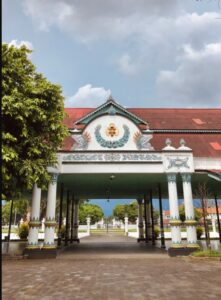Do you know Yogyakarta Palace? This palace has architectural buildings that have values. The following is information about the architectural philosophy of the Yogyakarta palace.
Yogyakarta Palace is an official palace belonging to the Ngayogyakarta Hadiningrat Sultanate which is located in Yogyakarta, Yogyakarta Special Region. The Yogyakarta palace building currently functions as the residence of the sultan and the palace household. Even the Yogyakarta palace is currently used as a historical tourist attraction.
History of the Yogyakarta Palace
The Yogyakarta Palace has been around since the days of the Mataram kingdom, which was originally a forest. This forest was a gift from Sultan Hadiwijaya to Raden Sutawijaya for successfully defeating and killing Ki Ageng Mangir. Then this forest, called the Mentaok forest, was cleared and made into the Mataram kingdom.
In the 1600s, Sultan Agung Hayakrakusumo attacked the Dutch in Batavia and suffered defeat. This war lasted a long time and finally after experiencing victory and the Dutch losing, peace was finally made and the Giyanti agreement was made which divided the Mataram kingdom into two, namely Yogyakarta and Surakarta.
Coat of arms of the Yogyakarta Palace
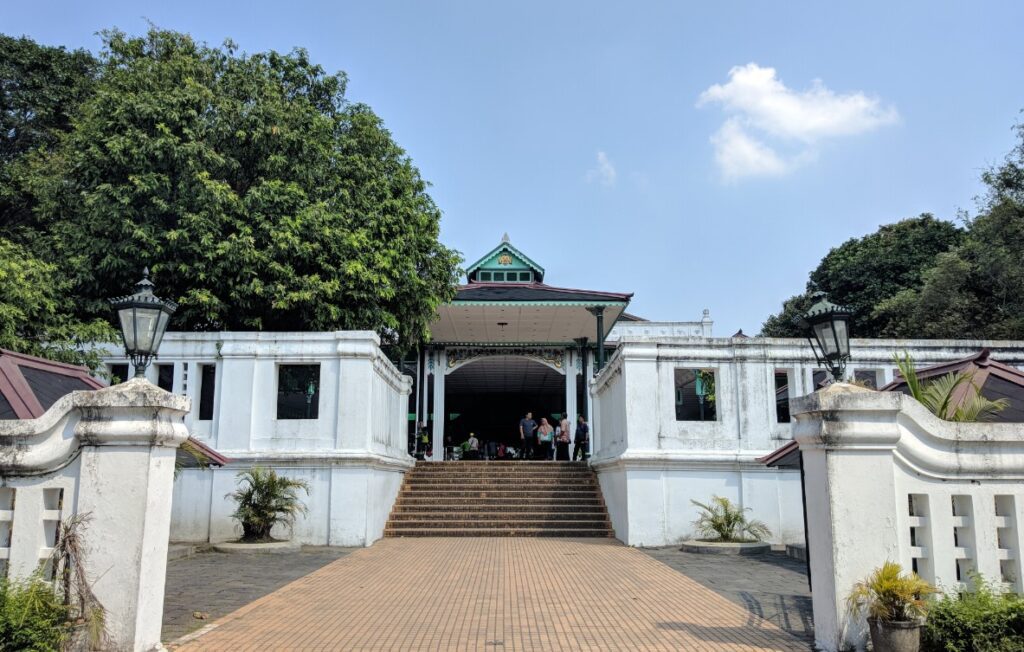
After getting to know the history of the Yogyakarta Palace, of course it wouldn’t be enough if you didn’t know the symbols of the Yogyakarta Palace. The symbol of the Yogyakarta palace is “Haba” which is an abbreviation of Hamengku Buwono which is installed in every ward of the palace.
Haba consists of Songkok, sumping, Praba, lor, tameng, haba, lotus, and tendrils. For the pattern of the building, namely tratag or pavilion.
The Yogyakarta Palace building has a symbol. This symbol certainly has philosophical value. The architectural philosophy of the Yogyakarta palace is also found in the palace buildings which have distinctive colors and distinctive building patterns.
Firstly, the typical colors of the Yogyakarta palace buildings are green and golden yellow. Apart from that, there is a combination of white, black and red as complements.
The architectural philosophy of the Yogyakarta palace, which lies in the distinctive colors of the building, has philosophical meaning. The building of the Yogyakarta Palace itself has a unique architectural philosophy of the Yogyakarta Palace, namely that a building or house can protect and protect the occupants inside, so a protector is needed which is symbolized by wings.
The roof of the Yogyakarta palace building, symbolized by the crown, also has meaning as a symbol of government or leadership and the wings as protection for a better government order.
Furthermore, the Yogyakarta Palace building has a distinctive color, namely green, which has the philosophy of prosperity, prosperity and honor. The golden yellow color has a philosophy of authority and glory.
The Yogyakarta palace building so far from the reign of Sri Sultan Hamengku Buwono I until now Hamengku Buwono X has remained the same and there have been no changes at all.
However, there is little renovation in the area that was damaged during the Yogyakarta earthquake. The buildings that suffered damage such as Kagungan Dalem Serambi Besar Mosque, Witana in Sitihinggil, Witana Kamandhungan north, Ward Srimanganti west, Ward Asrep, brick fence north of Gedong Jene, Ward
Kemagangan.
Architectural Philosophy of the Yogyakarta Palace
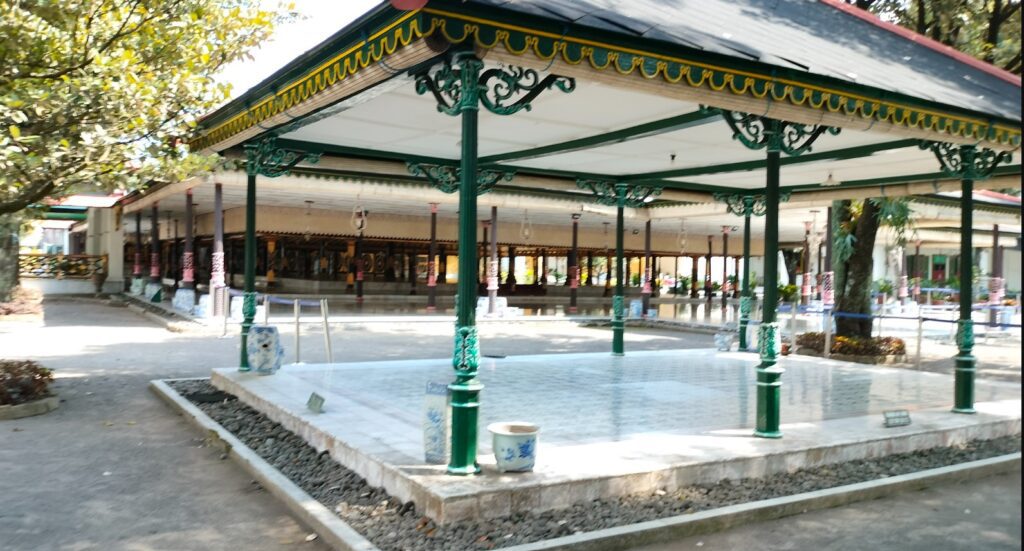
The Yogyakarta palace buildings have a variety of architecture, namely Javanese European style. But of course these buildings have meaningful and meaningful architectural philosophical value.
The symbolic philosophical meaning of the colors and patterns of the Yogyakarta Palace building means teaching someone to live a natural life. This is because with
In a natural life, a person will feel prosperity and tranquility.
The values contained in the meaning of symbolic philosophy in the architecture of the Yogyakarta palace are social values, sociability, friendliness, and feelings of sympathy and empathy. This attitude is the key to success in achieving social value.
Many people use this social value as a way of life for people who like socializing and love fellow human beings.
Apart from that, religious values, in essence, are values that have the strongest basis in truth compared to previous values. Religious values originate from the highest truth that comes from God and is the highest value that must be achieved.
Buildings in the Yogyakarta Palace
In the Yogyakarta palace there are buildings that have symbolic value and certain functions. Symbolic is a message or symbol as an intermediary. The palace environment also has a certain meaning.
The forms of buildings from this Yogyakarta palace such as Kutuk ngamban, Lojana hanging emblem of Klabang nyander, Trajumas, and 3 regols which include Regol semartinandhu, Regol brajanala, Regol srimanganti.
Then for the buildings in the Yogyakarta Palace, namely Wards which have certain functions, including the following:
– Moving ward
The first is the Pangurakan shed which functions as a place to send away people who do not follow the king’s rules.
– Performance ward
Next is the Performance ward. This ward functions as a place for the grebeg ceremony.
– Ward kori
Then the Kori Barn, the function of the Kori barn is as a place for servants
carrying out the task of the people’s requests to the sultan.
– Keben Ward
Next there is Bangsal Keben or what is called bangsal maniti. This barn functions as a meeting place for the regents, as well as a waiting place for the nobles and a place to prepare themselves when entering the kingdom.
– Ward hall hall
The fifth is the Pamangukan Bale Barn, this barn serves as a place for servants. The palace will serve as a place to wait for pick-up people.
– Balemangu Ward
Sixth, there is a balemangu ward that functions as a place to adjudicate religious law due to inheritance matters.
– Shipping ward
The seventh is the shipping shed that serves as a gathering place for the priyayi, regent with the rank of regent and above.
– Baking ward
Eighth, there is the Pamunggangan ward which functions to store gamelan.
– Great ward
Ninth there is a grand ward which functions as a place to hold royal courts.
– Ward pacikeran
Tenth, there is a pacikeran shed that serves as a place to punish the guilty.
– Witana Ward
The function of the witana ward is as an exhibition of wealth.
– Ward mangunturtangkil
The last is the mangunturtangkil ward which functions as the place of the sinewaka king during the conflict.
That was information related to the architectural philosophy of the Yogyakarta palace and some information related to the Yogyakarta palace. Hopefully this information can be useful for readers.
After reading the article above regarding the Yogyakarta palace, have you become interested in visiting the Yogyakarta palace but are confused about how to do it?
Calm Yogyakarta Tour will provide a solution for you. For those of you who are interested in visiting the Yogyakarta palace and learning about the philosophy of the Yogyakarta palace building, don’t worry, you can come to visit one of these tourist attractions which is a historical tourist destination in the city of Yogyakarta.
Visiting the Yogyakarta palace, of course you need a guide, Yogyakarta tour is ready to accompany your holiday exploring the Yogyakarta palace.
Get to know Yogyakarta tour as a friend and travel guide to spend time visiting Yogyakarta tourist attractions. Of course, you will get a new experience traveling with Yogyakarta tour.
Immediately schedule your holiday with Yogyakarta tour and get the best promotions for a fun holiday in Yogyakarta.

